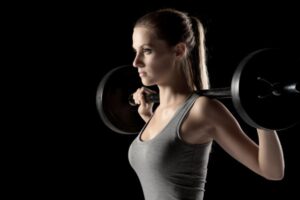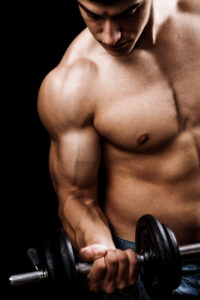
There are so many facets to fitness training but, here at Kelsey Kerridge, we would argue that one of the corner stones of a great fitness regime is weight training.
Whether you are an elite athlete, a keen gym-goer or a complete beginner, weight training is the way to build a great foundation from which all your other fitness activities can develop.
It is also a great way to add some variety to your workout because there are so many things you can do in the gym or at home that are centred around weights.
Over the next three blog posts, we are going to look at weight training in a little more depth and offer some ideas that you can incorporate into your fitness regime.
Seven good reasons to do weight training
But before we get into that, let’s remind ourselves of seven good reasons to dust off the weights and start pumping some iron.
- Weight training is a great way to lose body fat. As you lift weights, so you build lean muscle. This, in turn, promotes a higher metabolism – i.e. burns more fat.
- A well-thought out weight training programme will help you create the body you feel happy with. Lean and toned, well-defined – talk to our knowledgeable gym instructors and they will help you devise the programme that will give you the results you want.
- Weight training helps strengthen bones, which reduces the risk of fractures and broken bones.
- Weight training can also reduce the risk of injury as it strengthens the connective tissues and joints around muscle groups. By strengthening ligaments and tendons, you will reduce the risk of injury both in sports performance but also everyday life.
- Weight training raises your metabolic rate for up to 24 hours after you have exercised. Research has shown that after an intensive weight training session there is an Excess Post-Exercise Oxygen Consumption, which helps break down fat stores in the body.
- Your back, shoulders and core will benefit hugely from weight training. It will help improve your posture and help prevent lower back pain.
- Exercise generally releases endorphins and this is also true of weight training. An increase in endorphins naturally reduces stress and anxiety, turning a bad day into a good one.

Exercise advice
Before you set off on this weights session, make sure you are warm and stretched, which might mean jumping on the treadmill or the bike and getting your heart rate up and your muscles warm, but this group of exercises is all about form and making sure you are working the correct body parts.
These exercises are all designed to tone, rather than increase muscle size, hence the higher number of reps. If you are looking to promote muscle growth, then lower the amount of repetitions but increase the weight you are lifting – you should be at the point of failure by the time you have reached the eighth rep in this scenario.
All you need for these exercises are a mat, a pair of dumbbells – weighted so that you can perform the exercise but by the time you get towards the end of a set, you are feeling the pain.
Work your way through the four exercises, and repeat the whole programme five times. The number of reps are listed at the end of each exercise description.
Low Surrender Squats
Start in a low squat position with dumbbell weights held at shoulders. Step your right foot back behind you, planting the ball of the foot on the floor as you gently lower your knee to the ground. Both knees should be at opposing 90-degree angles. Step your left foot back to meet the right so that you’re kneeling on the ground. Step your right foot forward so that you’re in the same position as before, just with the opposite foot in front. Bring your left foot forward (staying low), returning to your starting low squat position. Switch your lead foot each rep.
Do 12 reps (six on each side).
Works: Quads, hamstrings, hip flexors and glutes
Chest-Overhead Press Jacks
Start standing with your feet together and a single dumbbell held in both hands at your chest. As you jump your feet out wide, press the weight forward and chest height. Jump the feet back together and return the weight to starting position. Next time you jump the feet out wide, press the weight overhead. Jump feet back to starting position, lowering the weight. That’s 1 rep. This is a quick movement, but make sure you don’t end up flailing your arms around as your muscles get tired.
Do 20 reps.
Works: Triceps, biceps, deltoids, trapezius, pectorals, rhomboids, plus legs and core.
Row Plank Jumps
Start in a plank position holding dumbbells planted firmly on the ground beneath your shoulders. From this starting position, do a row on each side, first driving the right elbow up to the ceiling and then the left, lifting the dumbbell up close to the side of your body. Try to keep your hips level as you do this; don’t twist open towards the rowing side (having a wider stance with your feet will help accomplish this). After you’ve rowed each side, quickly jump your feet up outside your hands and then back to you plank position. That’s 1 rep.
Do 20 reps.
Works: Triceps, biceps, deltoids, abdominals.
Full Body Crunch
Start laying on your back with legs outstretched and hovering a couple inches off the ground. Holding a weight in your hands, arms should be outstretched overhead and hovering as well. From this starting position, crunch up, bringing your knees in towards your chest as you lift your shoulder blades off the ground and bring the weight up and over towards your shins. Extend back out, lowering to starting position. The goal is to never bring the legs and/or weight to rest on the ground when you extend back out.
Do 15 reps.
Works: Abdominals, Latissimus, hip flexors, triceps and biceps, quadriceps.







